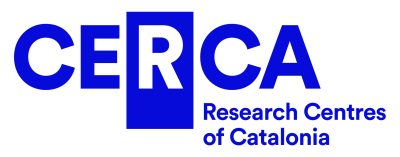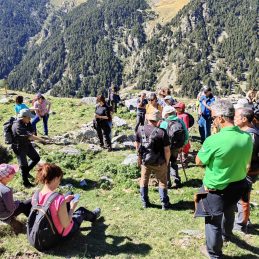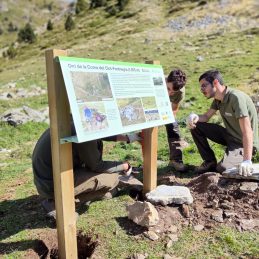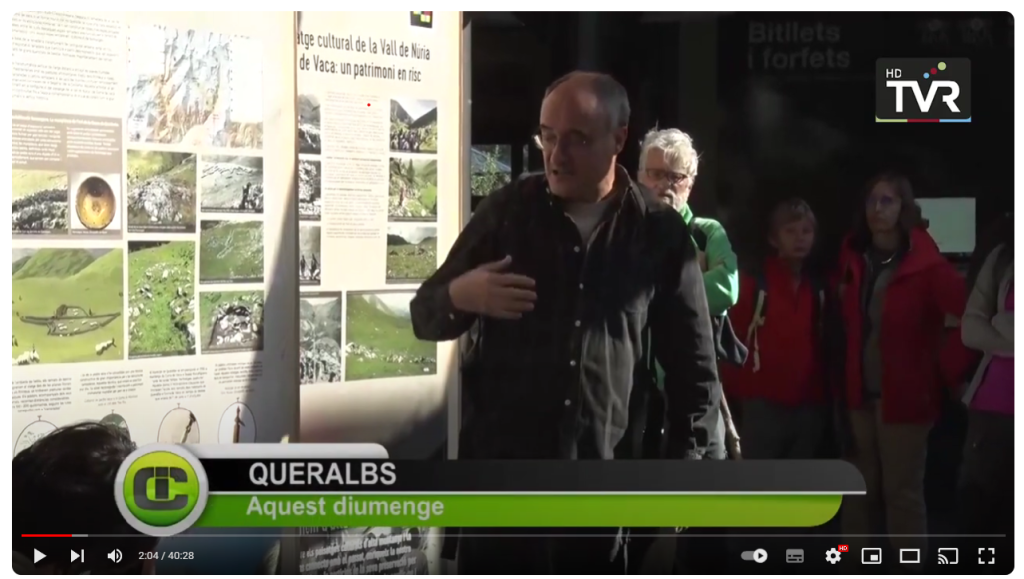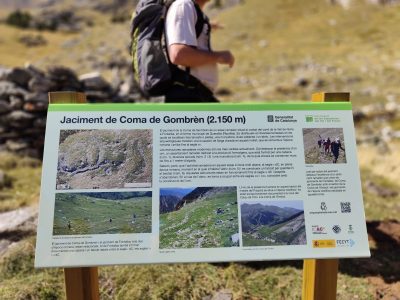
The ICAC features the final results of the ArqueoPirenaia transfer project in the Vall de Núria (Queralbs), with the participation of the main entities and institutions of the territory.
Vall de Núria territory has a new set of educational and cultural resources, which highlight the history of high mountain cultural landscapes and contribute to the revitalization of the region.
The ArqueoPirenaia project (GIAP) has enabled the creation of a stable working group with various local entities and institutions involved in heritage management and territorial sustainable development.
A novel knowledge transfer initiative in the field of heritage management.
The new heritage and educational resources include a traveling exhibition with eight exhibition panels equipped with various technological applications that facilitate access for people with diverse functional abilities, a didactic laboratory that introduces Landscape Archaeology to a wide audience (school, family, diverse groups…), and a virtual space on science and heritage.
These resources significantly contribute to the appreciation of the cultural landscape and provide tools to local stakeholders for balancing heritage protection and sustainable development of the region.
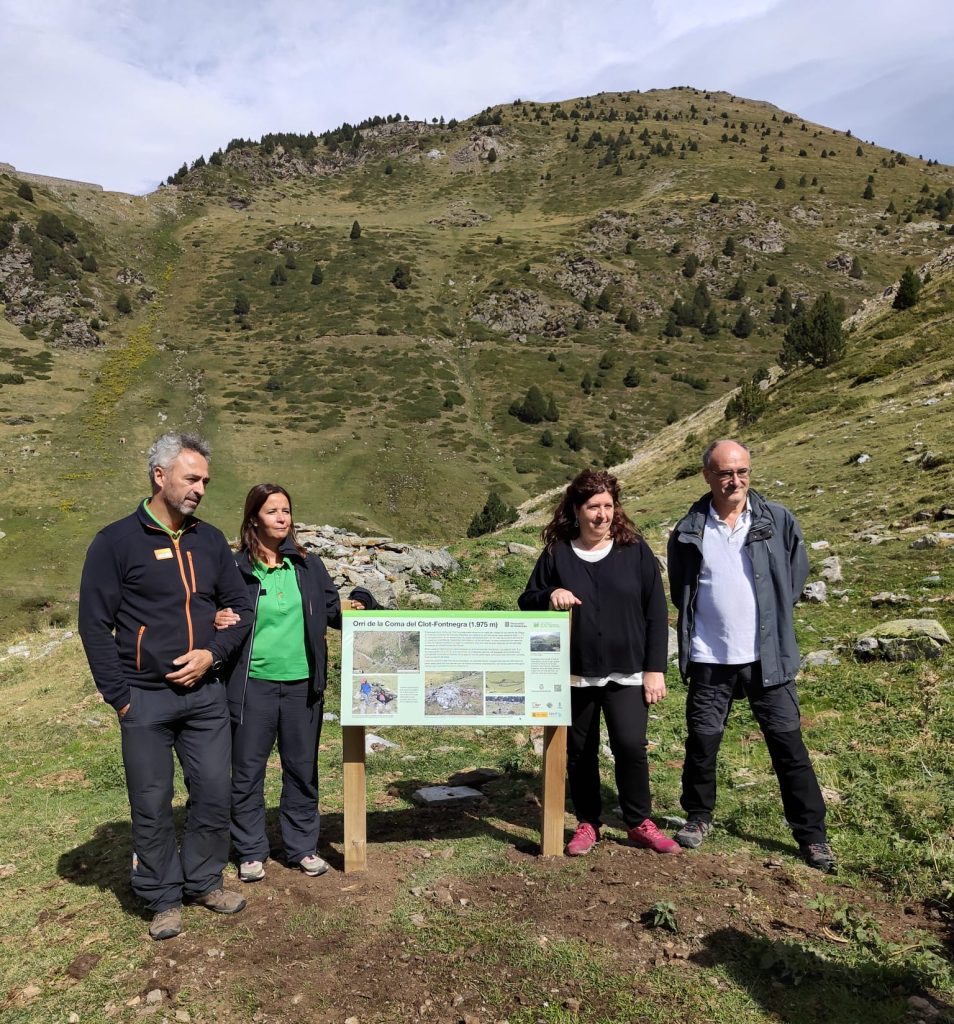
A new sight on the landscape of Vall de Núria and Coma de Vaca, in the municipality of Queralbs (Pyrenees).
Through archaeology, visitors will be able to discover the entire historical and cultural legacy hidden behind the high mountain landscape in the Pyrenees.
A new perspective on what the reality of mountain landscapes is and how they have been transformed and shaped by the effects of human occupation, which, in the case of the municipality of Queralbs (Ripollès), dates back to prehistory.
The results of the ArqueoPirenaia project bring scientific knowledge closer to the public and provide the residents of Ripollès with a new interpretation of their natural environment, a fresh understanding of the changes the landscape has undergone, and the impact of human presence on its transformation.
ArqueoPirenaia is the result of interdisciplinary research work led by the GIAP research group of the Catalan Institute of Classical Archaeology (ICAC-CERCA), which, over a period of 10 years, has conducted studies focused on archaeological, historical, and paleoenvironmental aspects of the landscape to characterize its transformation over time.
Active participation of the local community has been a fundamental pillar in all stages of the project.
Collaboration between territorial institutions and entities has been key to the project’s success. The involvement of the Parc Natural de les Capçaleres del Ter i del Freser, the municipalities of Queralbs and Ripoll, the Vall de Núria Station (FFCC), and the Ethnographic Museum of Ripoll has allowed the creation of a driving force that will continue to promote the cultural and educational resources generated by the project to the public and the population of the region, turning science and research into tools for regional development.
The project has been funded by local institutions and has received support from the FECYT Foundation, the Spanish Foundation for Science and Technology, of the Ministry of Science and Innovation (FCT-21-17298).
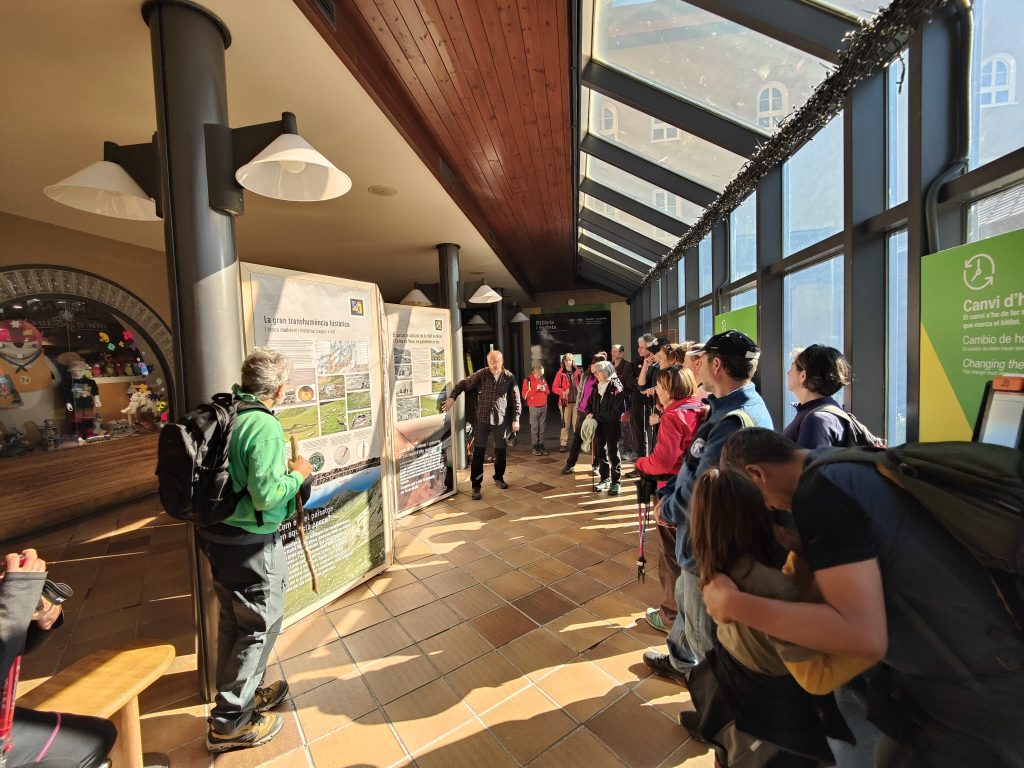
A project from and for the region
At the inauguration of the traveling exhibition “Les valls de Núria i Coma de Vaca: paisatges culturals mil·lenaris,” the press reported on the presentation of the final results of the ArqueoPirenaia project on Sunday, September 24th, at Vall de Núria Station (FFCC).
Josep Maria Palet, the director of ICAC, explained to ACN (with journalist Lourdes Casademont) that the research by the GIAP group in the municipality of Queralbs has uncovered an unknown Neolithic past:
We thought that many of these structures related to livestock activity – enclosures, huts, shelters, and orris – were from very contemporary periods, but we have seen that some are thousands of years old and are very well preserved because they have been reused over time.
For Palet, this is an “exceptional” heritage because this continuity in use has allowed them to be “perfectly preserved and appear to be from the last century when in reality, their origin is Neolithic” (Source: La Vanguardia).
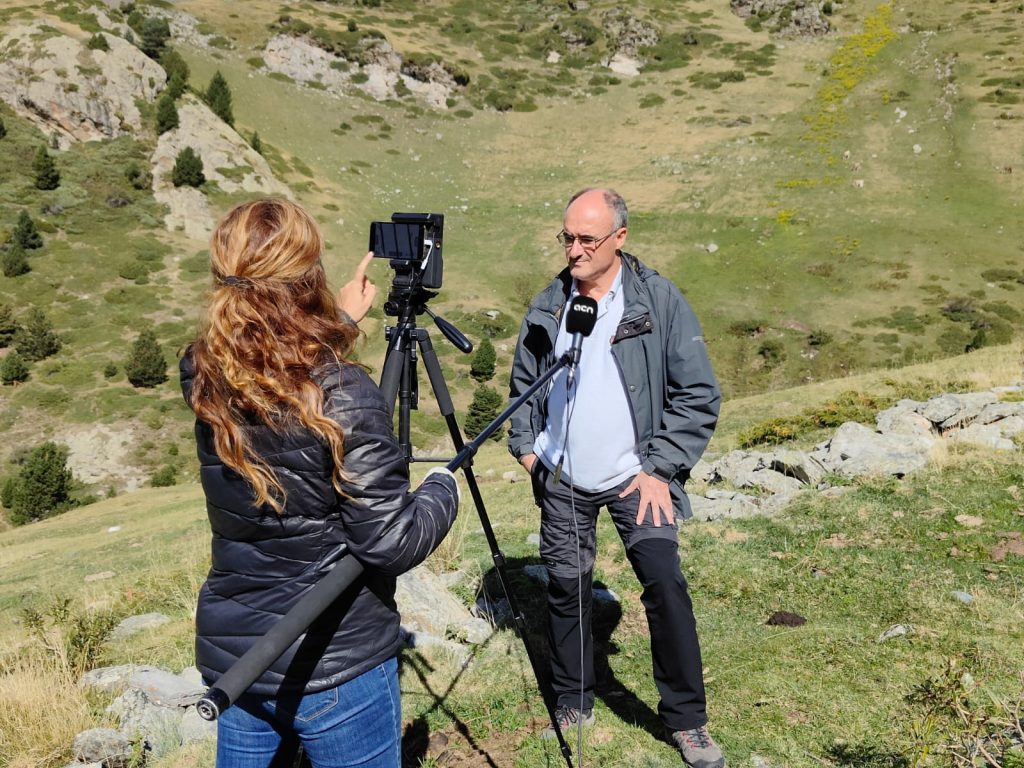
David Codony, responsible for events at Vall de Núria, emphasized that this new tourism product is “strategic”: “It’s not just about putting up a panel on the mountain, but it’s a set of actions (…) with the goal of enriching the leisure time of those people who might only come for a very classic excursion.” Furthermore, the project is fully aligned with the concept of sustainable tourism, another strategic value of the park that seeks to promote environmental conservation and respect (Source: Regió7).
From Queralbs, the mayor, Imma Constans, highlighted the networked work that has been done to reach this point and emphasized that the local community, the Park, and the ICAC have joined forces in what will be a “future commitment” and already anticipates that they want to create an exhibition with some of the findings (Source: Diari de Girona).
The completion of the ArqueoPirenaia project is the starting point for consolidating collaborations between institutions and expanding potential knowledge transfer resources and projects in a high-mountain context.

New heritage and educational resources at the service of the region
The Catalan Institute of Classical Archaeology (ICAC-CERCA) has more than a decade of research in landscape archaeology in the valleys of Núria and Coma de Vaca, a cultural treasure in the Eastern Pyrenees. The ArqueoPirenaia project, funded by various regional institutions and the FECYT Foundation, has succeeded in highlighting the millennia-old history of this mountain environment and bringing archaeological and scientific discoveries to the public, enriching our knowledge of the region’s heritage and culture.
ICAC is proud to present the final results of this project, with the hope that the knowledge generated by the research becomes a resource for the sustainable development of the region, from cultural, social, economic, and educational perspectives, and inspires the community to explore and appreciate its past in an engaging and accessible way.
The materials of the traveling exhibition incorporate Navilens codes to ensure accessibility for people with diverse functional abilities. This is the first time this technology has been used in scientific outreach materials and is a unique experience in the Ripollès region, in Catalonia, and likely in the rest of Spain. Navilens technology allows people with diverse functional abilities to access graphic and visual content through audio descriptions, among other available resources.
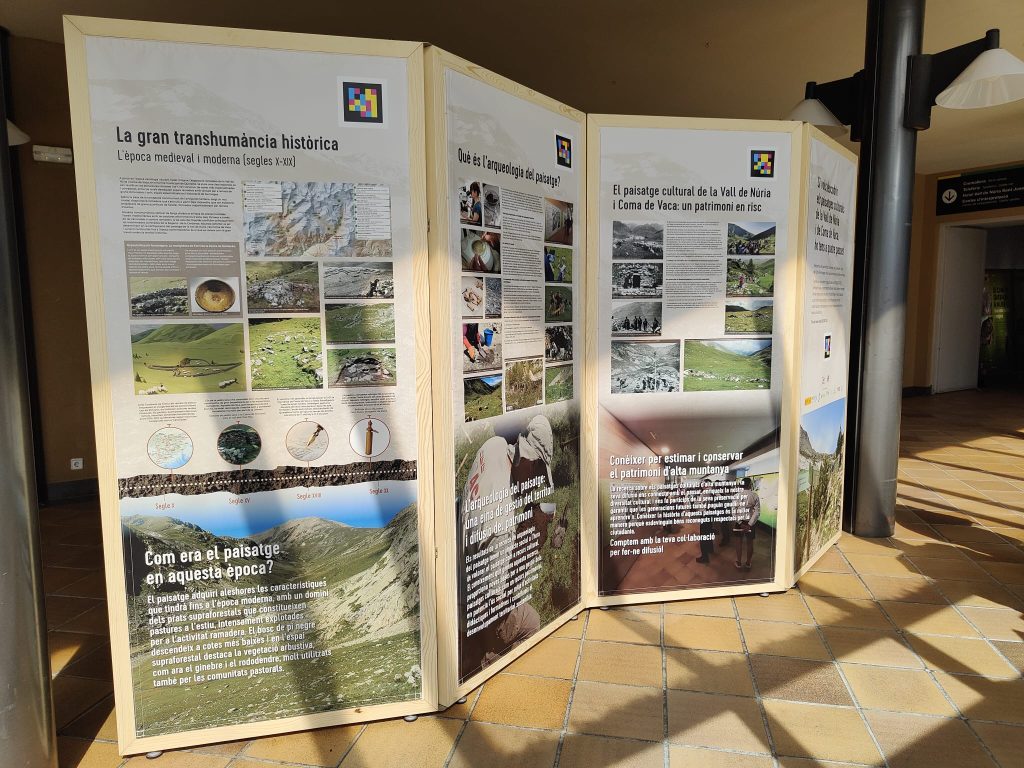
Furthermore, the mobile laboratory offers an immersive experience in landscape archaeology, from a hands-on perspective: those attending the workshops will get firsthand knowledge of how landscape archaeologists work, including their research focus, fieldwork procedures, necessary preparations, different stages of research – photointerpretation, surveying, excavation, laboratory analysis, and more.
Didactic suitcases are a common educational resource in cultural institutions such as museums. Now, they will be used for the first time to explain the scientific discipline and research methodology of landscape archaeology, transformed into a mobile didactic laboratory that can travel throughout the region.

Background: Over ten years of ICAC research in the Pyrenees
Since 2010, the Research Group in Landscape Archaeology (GIAP) of ICAC has been dedicated to exploring the rich history of Vall de Núria and Coma de Vaca, in the municipality of Queralbs (Ripollès), an area of great archaeological and historical significance where the traces of past societies date back to the Neolithic era, and historical events such as Romanization, feudalism, and modern and contemporary economic expansion have had an impact.
The results of a decade of research have revealed that human occupation has influenced the transformation of this landscape, from the early Neolithic traces to historical events like Romanization, feudalism, and modern and contemporary economic expansion.
Despite this extensive knowledge, the cultural landscape of Vall de Núria and Coma de Vaca (Queralbs) and its archaeological heritage are largely unknown to the general public, including local residents. For this reason, the ArqueoPirenaia project has focused on creating new educational and social knowledge transfer resources to enable the public to discover the characteristics and antiquity of human occupation in the Valle de Núria and Coma de Vaca and to experience the mountain archaeology that has been carried out in the region in recent years.
The presentation of these results marks the beginning of a long-term collaborative relationship between ICAC and various institutions in the region, aimed at bringing science to Ripollès and generating new cultural and heritage resources related to the landscape.

Related news:
La Vall de Núria explica el seu passat neolític: “Teníem un espai en blanc i ara hem descobert 350 estructures”, La Vanguardia, 24/09/2023.
Descobreixen a la Vall de Núria 350 estructures corresponents als pastors del neolític. ArqueoPirienia ha elaborat recursos didàctics per mostrar-ho als visitants, El Gerió Digital, 24/09/2023.
La Vall de Núria explica el seu passat neolític: “Teníem un espai en blanc i ara hem descobert 350 estructures”. Un nou producte turístic amb rutes, plafons i un laboratori ensenya com la ramaderia va transformar el paisatge, Diari de Girona, 24/09/2023.
La Vall de Núria explica el seu passat neolític, El Punt Avui, 24/09/2023.
La Vall de Núria explica el seu passat neolític: “Teníem un espai en blanc i ara hem descobert 350 estructures”, La República, 25/09/2023.
Edició vespre del Comarca Informatiu de TV Ripollès, del dilluns 25 de setembre, en la qual Jordi Altesa recull la presentació dels resultats del projecte ArqueoPirenaia, i entrevista Marta Flórez, coordinadora de transferència del coneixement de l’Institut Català d’Arqueologia Clàssica.
About the Catalan Institute of Classical Archaeology (ICAC-CERCA)
The Catalan Institute of Classical Archaeology (ICAC-CERCA) is a CERCA center established as a consortium in 2003 by the Government of Catalonia and the Rovira i Virgili University. It is a leading institution in the research and conservation of archaeological heritage in Catalonia. Its headquarters are located in Tarragona, a city recognized as a UNESCO World Heritage Site in the year 2000. Its researchers work to understand the past through the study of archaeological remains and promote the preservation of the rich historical legacy of the region. We are CERCA!
More information at www.icac.cat.
